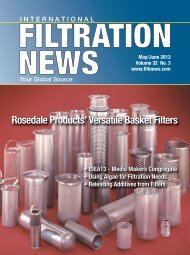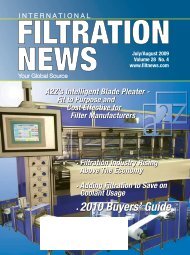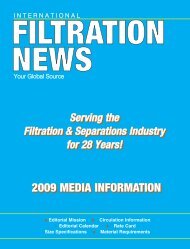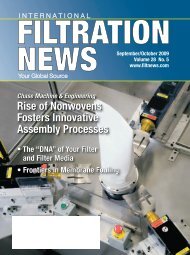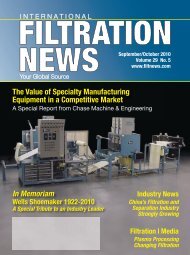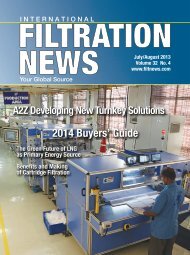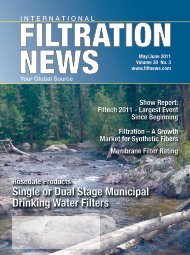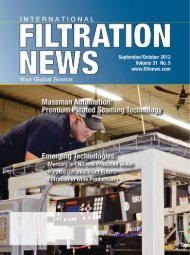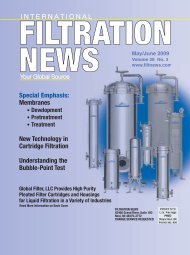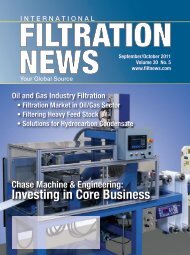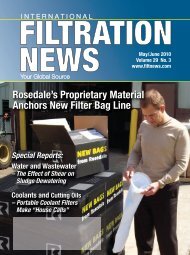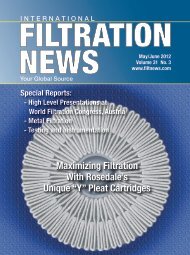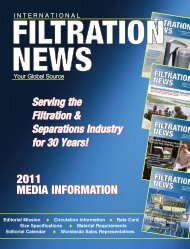2011 Buyers' Guide 2011 Buyers' Guide - International Fiber Journal
2011 Buyers' Guide 2011 Buyers' Guide - International Fiber Journal
2011 Buyers' Guide 2011 Buyers' Guide - International Fiber Journal
- No tags were found...
Create successful ePaper yourself
Turn your PDF publications into a flip-book with our unique Google optimized e-Paper software.
Filter | Sterilizationflow rates, examining physical aspectsof the membrane (shrinking orswelling of the membrane, discoloring,shredding, etc.).Integrity Testing: During validation,the user needs to assess the integrityof the filter and apparatus inorder to verify tight seals, installation,and the effects from sterilization andproduction. Another aspect to considerand validate is product-wet integritytesting. During manufacturing it is notalways feasible to perform a rinse priorto an integrity test; therefore, it becomesnecessary to validate the appropriateintegrity test method using theproduct. This can be assessed by comparingand calculating the integrity testresults using the filter manufacturesrecommended wetting agent and theend user’s product. During this process,it is recommended to perform multiplereplicates and/or multiple filter lots dueto variation within the membrane lots.Microbial Retention: The microbialretention test is performed using the industrystandard concentration of atleast 10 CFU/cm 2 of the effective filtrationarea. The typical challenge organismused is Brevundimonas diminutaATCC 19146. Other challenge organismsmay also be considered withsound justification and consultationwith the FDA. The microbial retentiontest is performed using worst case processingparameters and the goal is tovalidate that during these conditions asterile effluent is produced. Below aresome points to consider when developinga protocol for filtration sterilizationvalidation:Product Toxicity: The primary concernin the validation process is the affectof the product on the challengeorganism. Many products are designedto inhibit bacterial growth and mayeven have disinfectant properties.Other products intentionally incorporateantimicrobial ingredients and insome cases, bacterial toxicity may be aconsequence of a synergistic activity oftwo or more ingredients, or a by-productof various physical properties. To acertain extent, product toxicity can beanticipated. Where no overt toxicity isexpected after a review of the ingredientsand physical properties, a toxicitytest against the challenge organismshould be performed. If the toxicitycauses a two-log reduction or less, thechallenge titer can be adjusted up tocompensate. If the impact is greaterthan a two-log reduction, it is consideredbest practice to use a surrogatethat has similar properties to the ingredientsfound in the product. FDA guidancefor an appropriate surrogate ishighly recommended. If an appropriatesurrogate cannot be formulated, thenext best practice is the re-circulatingtechnique. In this case, the filter is exposedto the product using worst-caseprocess conditions and then the productis flushed out of the filter and apparatus,which are subsequently16 • August 2010 • www.filtnews.com



